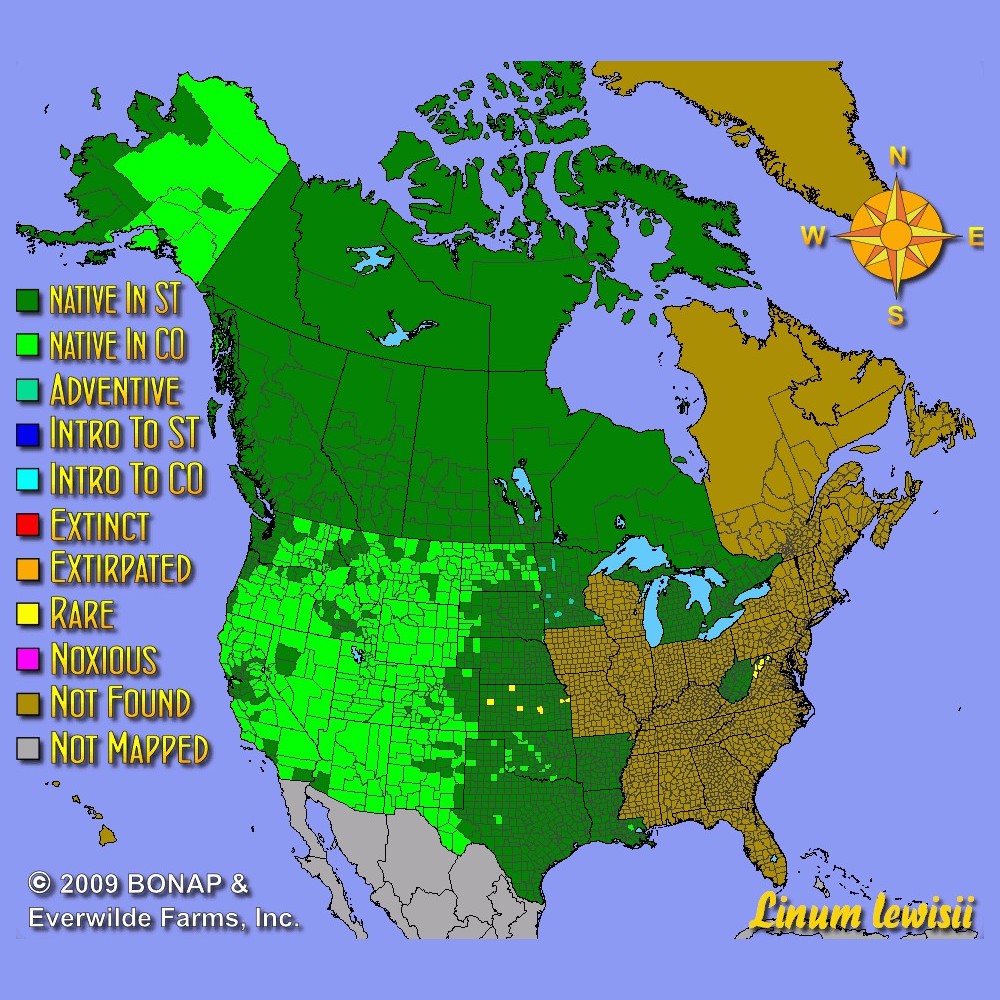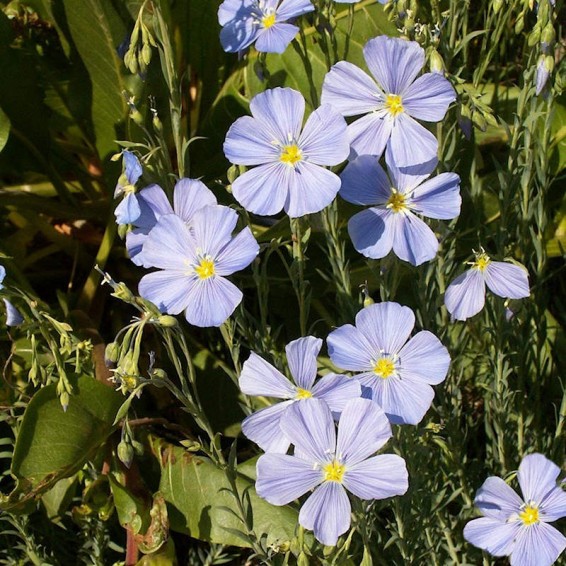Lewis Flax Seeds
- HOW TO GROW
- FAST FACTS
- REVIEWS
HOW TO GROW
Sowing: Direct sow in late fall or early spring, planting just below the surface of the soil. This species does not transplant well.
Growing: Water occasionally, controlling weeds to allow the seedlings to become established. Full growth and flowering usually does not occur until the second season of growth. Mature plants tolerate drought well, but flourish with occasional watering. Unless the seeds are being harvested, cut back the plant after flowering to allow for new growth next season.
Harvesting: These blossoms do not perform well as cut flowers, and are best enjoyed outdoors.
Seed Saving: Allow the seed pods to dry completely on the stem; break them open to collect the flat, dark seeds. Store them in a cool, dry place.
FAST FACTS
Common Names: Prairie Flax, Perennial Flax
Latin Name: Linum lewisii
Species Origin: US Native Wildflower
Type: Native Wildflowers
Life Cycle: Perennial
USDA Zones: 1, 2, 3, 4, 5, 6, 7, 8, 9, 10, 11
US Regions: California, Mountain, Arid/Desert, Plains/Texas, Midwest, Northern, Northeast, Southeast
Seeds per Ounce: 18,000
Stratification: No Stratification
Germination Ease: No Stratification
Sunlight: Full Sun
Height: 20 Inches
Color: Blue
Bloom Season: Blooms Late Spring, Blooms Early Summer
All Seeds...
....are the best quality, I only buy seeds from here now!
Lewis Flax Seeds
Looking forward to seeing the difference between this paler blue and the brighter Blue Flax, and hoping I will love it as much. These seeds are not easy to find locally! They were promptly shipped.
Planted! Waiting to see...
I really like the packaging and instructions, including how tall they'll get!
My favorite
I purchased 3 seed packets last year and was so pleased that I ordered many more. I can't wait for the weekend to plant.
Excellent products. Fast shipping
ewdiows
Lewis' Blue Flax
A wonderdul plant with lovely flowers and interesting foilage. I grew this from seed and most have survived since 2006 when I first grew these from seed. I lived in Central Illinois River Valley.
DESCRIPTION

HOW TO GROW
Sowing: Direct sow in late fall or early spring, planting just below the surface of the soil. This species does not transplant well.
Growing: Water occasionally, controlling weeds to allow the seedlings to become established. Full growth and flowering usually does not occur until the second season of growth. Mature plants tolerate drought well, but flourish with occasional watering. Unless the seeds are being harvested, cut back the plant after flowering to allow for new growth next season.
Harvesting: These blossoms do not perform well as cut flowers, and are best enjoyed outdoors.
Seed Saving: Allow the seed pods to dry completely on the stem; break them open to collect the flat, dark seeds. Store them in a cool, dry place.
FAST FACTS
Common Names: Prairie Flax, Perennial Flax
Latin Name: Linum lewisii
Species Origin: US Native Wildflower
Type: Native Wildflowers
Life Cycle: Perennial
USDA Zones: 1, 2, 3, 4, 5, 6, 7, 8, 9, 10, 11
US Regions: California, Mountain, Arid/Desert, Plains/Texas, Midwest, Northern, Northeast, Southeast
Seeds per Ounce: 18,000
Stratification: No Stratification
Germination Ease: No Stratification
Sunlight: Full Sun
Height: 20 Inches
Color: Blue
Bloom Season: Blooms Late Spring, Blooms Early Summer
Reviews
Review
All Seeds...
....are the best quality, I only buy seeds from here now!
Review
Lewis Flax Seeds
Looking forward to seeing the difference between this paler blue and the brighter Blue Flax, and hoping I will love it as much. These seeds are not easy to find locally! They were promptly shipped.
Review
Planted! Waiting to see...
I really like the packaging and instructions, including how tall they'll get!
Review
My favorite
I purchased 3 seed packets last year and was so pleased that I ordered many more. I can't wait for the weekend to plant.
Excellent products. Fast shipping
Review
ewdiows
Review
Lewis' Blue Flax
A wonderdul plant with lovely flowers and interesting foilage. I grew this from seed and most have survived since 2006 when I first grew these from seed. I lived in Central Illinois River Valley.






